- Home
- Keith Douglass
Joint Operations c-16 Page 3
Joint Operations c-16 Read online
Page 3
Of course, going active was a risk as well. The American submarine would be able to hear the sonar pings at a greater range than the carrier would be able to hear the returns from her hull. Additionally, the high speed of the carrier was producing a massive amount of noise, further degrading the Chinese ASW ability. But the carrier was counting on being able to find and attack the submarine with a barrage of weapons and at least hold her at bay until the ship popped out its final surprise.
On the weatherdecks, Ishi Zhaolong struggled across the deck, moving as quickly as he could to the port SVTT tube. The first return from the active sonar had just squeaked across the sonarman’s headphones, providing enough data for a bearing-only launch. Ishi had been sure that the submarine would be to their right, and he was slightly alarmed to find that he’d guessed wrong. Still, the other team would be loading up the port SVTT. He wasn’t critically needed there, but as the senior torpedoman onboard, he wanted to watch the evolution. With the deck now clear of both aircraft and disguises, darting back and forth between the four sets of launchers, two to the port, two on starboards, was much less of a problem than routine maintenance had been.
He arrived at the port launcher just as the tube reached one thousand pounds of pressure. The other torpedomen had hearing protectors clamped down over their ears and were stepping back from the pressurized tube. If anything went wrong now, the men would be peppered with shrapnel.
Ishi stepped forward and double-checked the settings himself. The torpedo was set to run shallow for a surface target. Its seeker head combined advanced wakehoming technology along with a relatively rudimentary acoustic discriminator. It also housed a command destruct secondary charge that could be used if the torpedo insisted on acquiring its own aircraft carrier as a target.
He nodded to the man crouched down beside the SVTT tube, then stepped back into the doubtful protection of a stanchion. He couldn’t resist peering around the metal support to watch the actual firing.
There was a surprisingly smooth blast of noise, only slightly louder than the test firings they’d practiced back in the Yellow Sea and then enroute Hawaii. A metal cylinder four feet long and a foot in diameter shot out of the tube, remained airborne for thirty feet, then slid smoothly into the ocean with only a small splash and some expanding ripples that the ocean swells quickly smoothed out. Before the last ripples had faded away, the crew was manhandling another torpedo into the tube.
“Torpedo inbound,” a voice snapped over Ishi’s headset. He shouted at the crew to move faster, now desperate to get as many torpedoes in the water as he possibly could. What had seemed so thrilling, so very daring when it involved disrobing the carrier and launching aircraft now seemed all too deadly and personal.
A snapshot, that was all it had been, he thought frantically, scanning the water around him for any trace of the incoming torpedo. A desperate shot back down the bearing the submarine had seen the torpedo on, intended to shake up the carrier and force her to react as much as to actually target her. It’d be the first — but it wouldn’t be the last. As soon as the American submarine was relatively certain she’d shaken off Ishi’s first torpedo, she’d let off a barrage of torpedoes more carefully targeted, each one individually guided in on the carrier by an experienced crew.
For a moment, Ishi felt a moment of hopelessness. The deck that had seemed so spacious and safe now seemed ominously empty.
USS Centurion
0621 local (GMT –10)
“Only two, sir,” Otter was saying into the bitch box as Renny slid back into his seat next to him. “We’re carrying dummy loads for REFTRA, sir, not a full loadout. We’re in REFTRA.”
“And we’re damned well not supposed to be shooting war shots,” Captain Tran answered. “I know that — I know. You get me a firing solution. Make it right, Otter. We can’t afford to miss.”
Otter turned to Renny, desperation in his eyes. “We’re in REFTRA,” he said, as though that made some sort of sense.
The chief sonarman was standing behind them now, his presence a calming and steadying influence. “That’s all this is, son. REFTRA for real. You just do it like we’ve been doing it for the last five days, smooth and easy. I’m going to be watching the solution — we’ll nail that bastard.”
“What the hell is it?” Renny asked, all the while plugging in the bearings and readings he needed for a more accurate firing solution. Looking at it now, knowing that they had only been carrying three live torpedoes, getting off the snapshot might not have been that good an idea. Under normal circumstances, yeah, you’d want that. But not now.
“Bearing separation looks good,” the chief noted. He toggled on the mike in his hand. “Conn, Sonar, we have a firing solution.”
“Is it the one you want, Chief?” Tran asked, speaking to him as an equal. “Let me know.”
“I’ll take this one, sir,” the chief answered. “Single shot. We’re working up the second solution right now.”
“Very well. Weapons free, Chief.”
“Weapons free, aye.” The chief’s eyes were still fixed on the sonar screen. “Weapons, Sonar — you have — hold it. She’s turning. Captain, give me fifteen seconds, sir. I want a better solution.”
“Advise me when you have a solution.”
Renny swore quietly but passionately as he watched the odd surface contact’s acoustic signature waver across the bearings. “Zig-zag?” he asked.
“Yeah, the asshole,” the chief muttered. “S’okay. As long as we know about it, we can compensate for it. Look, he’s already starting to fall into a pattern. Get ready, Renny, Otter. I’m going to want this one off right when I say.”
Renny felt the sweat trickling down his back. It itched as it found his spine and coursed down it, soaking his undershirt and his coveralls. The waiting grew unbearable. Just as the chief started to give the order, a new sound cut through the quiet of the sonar shack. “Conn, sonar, torpedoes in the water. Two of them skipper.”
“Two, aye. Stand by for evasive maneuvers.” Even as the skipper spoke, the submarine leaned steeply to port and tilted forward. “Sonar, no change in the thermal layer?”
“No change, sir. Standing by with decoys.”
“You know when, Chief.”
“Aye-aye, sir. Renny, watch the contact — I’ve got the depth gauge — and keep your hand on the decoy.”
“Got it.” Renny knew what he was doing, had done it so many times in simulators and during REFTRA that the whole thing had a feeling of unreality to it. The chief standing behind him, Otter at his side — how many times had he done this in the last four days?
The chief would be watching the depth gauge. As the submarine approached the isothermal layer, where the temperature of the water was no longer the primary determinant of the speed of sound, the chief would eject the noisemakers. The decoys would churn up masses of bubbles in the water, enough sound to both mask the other sonar’s detection and hopefully confuse the inbound torpedoes. If the torpedoes were acoustic or active sonar, the submarine would have an excellent opportunity to make a mad dash to depth, make the ship lose sonar contact, then maneuver back around to take another shot at the ship.
Of course, acoustic blindness worked both ways. If the ship couldn’t see them, they couldn’t see the ship. No matter — if the decoys didn’t work, they’d hear the torpedo itself.
“Now,” the Chief said.
Renny slammed up the toggle that released first one decoy, then another. How many did they have? He was tempted to glance over at the status board, but the chief would have already checked.
The two decoys performed as they were supposed to, frothing up the water and blasting acoustic noise across the entire spectrum. The automatic gain controls kicked in, attenuating the noise in his headset down to a manageable level.
The first torpedo on Renny’s screen veered off to the right, clearly enticed by the attractive noise source saturating the water with acoustic energy. It reached a point that satisfied some primitive f
iring mechanism in its brain and it detonated.
The second one wasn’t so sure. The detonation of the first torpedo evidently confused it. It wavered along its track for a moment, then started a hard lefthand turn. “Search pattern,” the chief announced. “Conn, Sonar — it’s lost us. For now.”
“Roger,” the skipper answered. “Chief, I’m going to make a run for it back toward the contact. You see any problem with that?”
“Couple of ships between us and Sierra two, Skipper,” the chief answered. “Any word on their status?”
Renny listened to the conversation, his fingers still on the decoy buttons and his eyes glued to his screen. What the chief was asking made perfect sense, if you had to believe that someone just off the coast of Hawaii was shooting torpedoes at them.
“No information, Chief. Until I hear otherwise, every one of them is potentially hostile. Can you rule any of them out — any positive friendlies?”
“Yes, sir. I have Jefferson and her escorts, solid contact. I know where they are.”
“Under the circumstances, I’m not sure the carrier would appreciate a high-speed run toward her. Give me a course.”
“Two eight zero,” Renny whispered before the chief could ask. “That’s the straightest course that will leave us well clear of Jefferson.”
“Two eight zero,” the chief immediately repeated. Renny didn’t know whether the chief was just relying on Renny’s ability or whether he’d done the math himself. Verified it, probably. He’d seen the chief do that sort of instantaneous angles calculation before.
The submarine heeled hard in the opposite direction. She’d backed off on the down bubble and the deck was now almost level.
“Six minutes, captain. Four until we’re inside minimums.”
But we don’t want a max range shot, Renny thought. Not with only two more warshots onboard. No, Chief will want us in a good deal closer, maximize the probability of a kill.
A kill. The word sent fresh shivers down his spine, and just for a moment — not long at all, but enough to make him waver — Renny paused. The kill — it would be either them or the other boat.
The other, he decided on some level, making a full commitment to those two possible resolutions to their tactical situation. The other — and not us.
“Wait for it, now,” the chief said softly. “We’re safe right now. She’s lost us, she can’t hear us. She’s got to suspect we’re coming for her, but she has no idea where we are. Not yet.”
Renny found the words oddly soothing. He stole a moment to glance over at Otter and was relieved to see the calm, confident expression on the other man’s face. Yes, this was what they’d trained for, this was why they were here. They knew what to do, knew they were good at it. And before the hour was up, someone was going to learn that it was a very, very bad idea to shoot at the USS Centurion.
USS Jefferson
0622 local (GMT –10)
“Get them back here,” Batman roared, pounding on the TAO’s back. “Recall all fighters. Can’t you see it? Don’t you know what’s going to happen?” He grabbed the handset without waiting for an answer. “All aircraft, this is the admiral. Starboard marshall — now. If you’re getting low on fuel, we’ll handle that, but clear the area around the island’s airspace immediately. Acknowledge.” He dropped the mike from his mouth and waited for the responses.
One by one, the aircraft leads answered up. As they watched, the friendly aircraft symbols that had been boring in on Hawaii stopped, then the pixels pivoted to indicate that the aircraft were headed back to the carrier. Over tactical, it was clear that the operations specialists that normally coordinated the approaches on the carrier were quickly becoming overwhelmed. The airborne E- 2C Hawkeye stepped in, assuming control of the majority of the aircraft and vectoring them around the approach radials to a safe distance south of Jefferson.
Batman stared at the screen, the color drained from his normally ruddy face. “My god, we almost bought it that time.” By now, even the watch officer understood what he meant.
The airspace around Hawaii and the main channel was engorged with a spiderweb of long speed leaders projecting out from missile symbology as the surface ships leaving port opened fire on the hostile aircraft symbols. Had the Jefferson’s aircraft continued inbound on the island, most of them would have become missile sumps for the firepower the cruisers and frigates were unleashing.
Tomcat 201
0623 local (GMT –10)
Lieutenant Hot Rock had been next in line for the tanker when TFCC and the Hawkeye started shouting orders. After an initial period of confusion, he managed to sort out what happened. It was unbelievable, unthinkable — but there it was. An enemy attack on Pearl Harbor. One part of his mind kept insisting it was simply another part of the battle problem that they’d been working all week.
Hot Rock’s lead, Lieutenant Commander Lobo Hanson, grasped the situation faster than he did. “Come on, Hot Rock. Snap out of it. I don’t have time to baby-sit you. Get your ass up the high position.”
He yanked backed, putting the Tomcat into a sheer, bone-crushing ascent toward high position. The loose deuce fighting formation was the one preferred by most American pilots, and consisted of a team of two aircraft. One took high position, guarding the tail of the forward aircraft and providing additional area coverage because of increased radar range with altitude. The other aircraft took a lower altitude, slightly forward, and was usually the first engage the enemy aircraft.
A couple of cruises ago, high position had been Hot Rock’s favorite. Although he hadn’t been willing to admit to anyone, he had suspected that a deep streak of cowardice ran down his spine. The idea of facing incoming fire, facing it and ignoring it all as he took his own shot, had seemed beyond him. For a while, he managed to slide by on his superb flying skills, but eventually even his backseater reluctantly voiced his opinion.
But finally, when it came right down to it, he found he had what it took. Ever since that cruise, he’d finally felt a part of the fighting squadron.
Not that anyone had let on. Even Commander Magruder, CO of VF 95, hadn’t suspected just how terrified he was in the air. Oh, sure, in aerobatics, formation flying and practice bombing runs — he was above most of them when it came to that sort of stuff.
But when it came down to actually shooting, to facing down an enemy and fighting for your own little square piece of airspace, he backed off. The last time, it had almost gotten Lobo killed.
But that was behind him now. The squadron seemed to be willing to let his past go, and God knows for what reason, Lobo Hanson had decided he was all right. So when she said take high position, his hands and feet moved to obey before he could even get out a question.
But what the carrier was saying was insane, wasn’t it? An attack on Pearl Harbor?
Impossible. Absolutely impossible. As he climbed to altitude, he found himself wondering just how many men had said that before.
“Twenty miles,” his backseater announced. “You got a visual?”
“Yeah, I got it.” The islands of Hawaii stretched out as green and gray lozenges on the horizon. Even from this different distance, their volcanic origins were evident. You could see the islands’ ancestry in the rugged jagged peaks climbing up in the sky, the sheer black of hardened lava as the last of the sun hit it. From this angle, you could see the difference between the leeway and the windward sides of the island, with the former covered with lush green vegetation, and the latter less so.
So who was howling that enemy aircraft were inbound on the island? Boy, somebody was going to get their ass kicked when the admiral figured out who had screwed the pooch on this one.
The more Hot Rock thought about it, the more convinced he was that it was all a screwup. Maybe even part of the training. That had to be the explanation — some stupid-assed junior officer had seen something, maybe a weather balloon, maybe somebody burning trash, and had made the wild leap to assuming whatever it was that he saw was caused by an
air attack.
Just then, he saw it, and immediately revised his opinion. Black smoke boiled up, stark and ugly against the verdant hills. He saw fire flashing up at the base of it, obscured higher up by the swirling smoke.
A civilian airliner crash, maybe. Maybe a chemical plant exploding. He was aware that he was grasping at straws now, trying desperately to find some other explanation for what his eyes told him. Anything, everything — it couldn’t be what the carrier was now saying.
“Ten miles.” Hot Rock heard the tension in his backseater’s voiced ratchet higher. So at least one of them inside this airframe believed what the carrier was saying. “Aw, shit! Look at the ships getting under way!”
He could see them now, the foamy wakes cutting swaths through the placid blue waters as the American fleet steamed toward the exit of the harbor. So many of them, crowded so impossibly close, at this distance looking more like light gray swatches against the water than actual Navy ships. But his link data confirmed it. Every combatant and every other Navy vessel capable of getting under way was steaming out from Hawaii.
But where were the other aircraft? He glanced down in his radar tactical display, and saw the picture beginning to build. The aircraft further ahead of him were picking them up on radar now, and as the ships lit off their combat systems and started feeding data to the battle group LINK, they were getting the advantage of the powerful SPY radar system.
Sure enough, there was something that looked awfully much like an enemy fighter pack clustered on the far side of the island. They were in the sort of minor disarray that normally follows a successful bombing run as aircraft break off on their assigned patterns and maneuver to avoid mutual interference. But they were starting to regroup now, probably transitioning from a land attack mode to getting ready for aerial combat.
How many of them were there? He tore his eyes away from the actual island, and tried to take a quick count. Thirty, maybe forty.

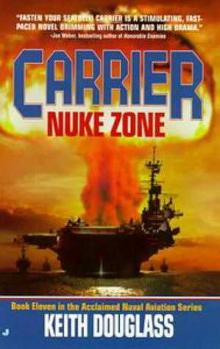 Nuke Zone c-11
Nuke Zone c-11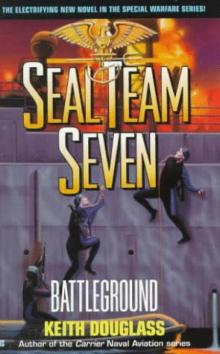 Seal Team Seven 6 - Battleground
Seal Team Seven 6 - Battleground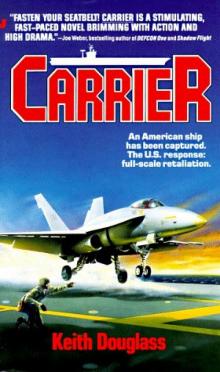 Carrier c-1
Carrier c-1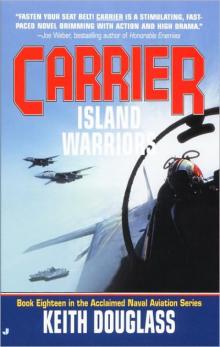 Island Warriors c-18
Island Warriors c-18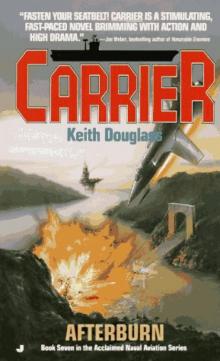 Afterburn c-7
Afterburn c-7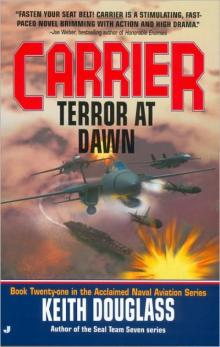 Terror At Dawn c-21
Terror At Dawn c-21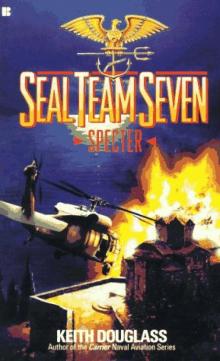 Specter sts-2
Specter sts-2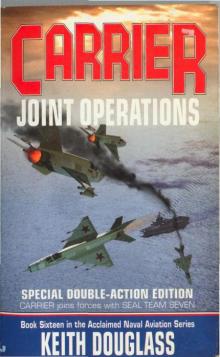 Joint Operations c-16
Joint Operations c-16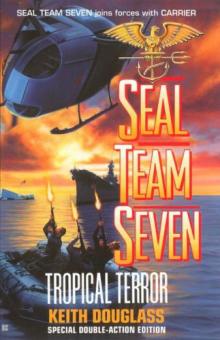 Tropical Terror sts-12
Tropical Terror sts-12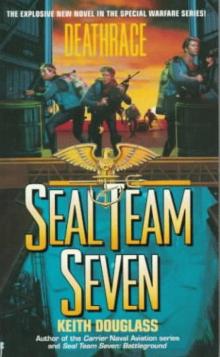 Seal Team Seven 7 - Deathrace
Seal Team Seven 7 - Deathrace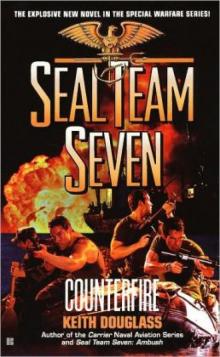 Counterfire sts-16
Counterfire sts-16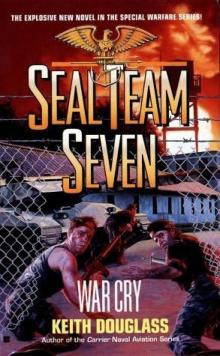 War Cry sts-9
War Cry sts-9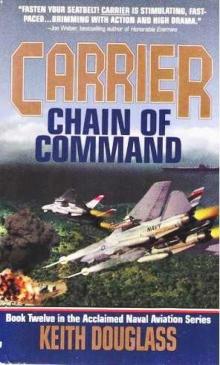 Chain of Command c-12
Chain of Command c-12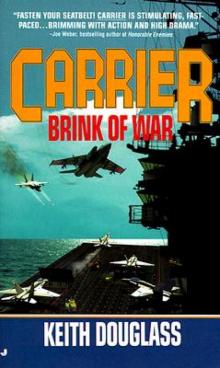 Brink of War c-13
Brink of War c-13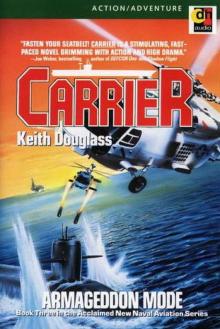 Armageddon Mode c-3
Armageddon Mode c-3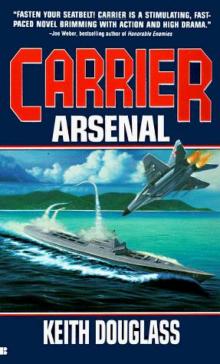 Arsenal c-10
Arsenal c-10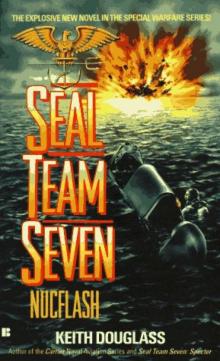 Nucflash sts-3
Nucflash sts-3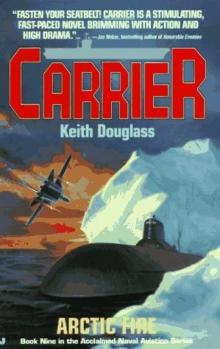 Arctic Fire c-9
Arctic Fire c-9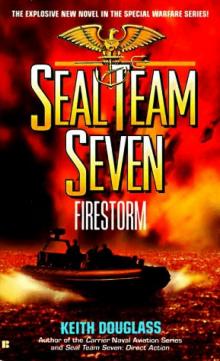 Firestorm sts-5
Firestorm sts-5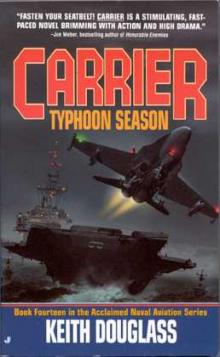 Typhoon Season c-14
Typhoon Season c-14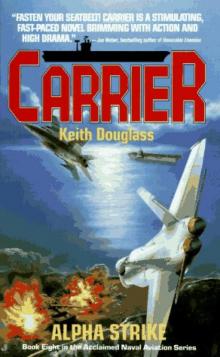 Alpha Strike c-8
Alpha Strike c-8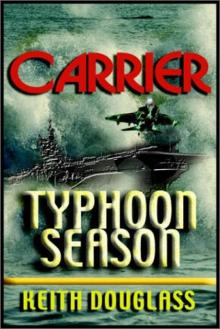 Carrier 14 - TYPHOON SEASON
Carrier 14 - TYPHOON SEASON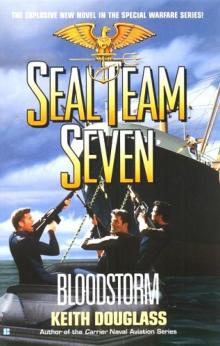 Bloodstorm sts-13
Bloodstorm sts-13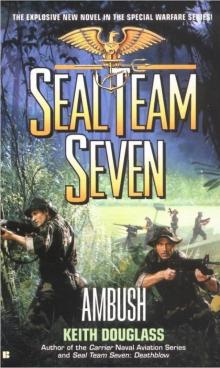 Ambush sts-15
Ambush sts-15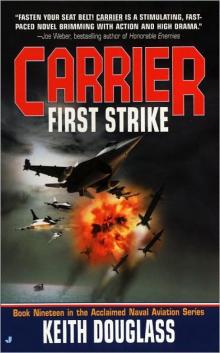 First Strike c-19
First Strike c-19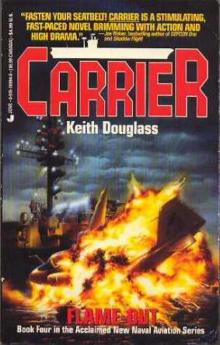 Flame Out c-4
Flame Out c-4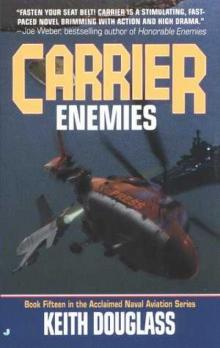 Enemies c-15
Enemies c-15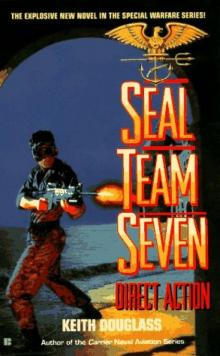 Seal Team Seven 04 - Direct Action
Seal Team Seven 04 - Direct Action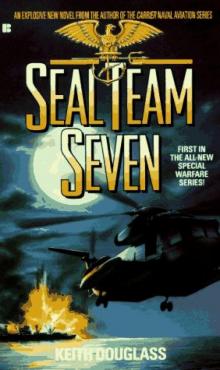 Seal Team Seven 01 - Seal Team Seven
Seal Team Seven 01 - Seal Team Seven Payback sts-17
Payback sts-17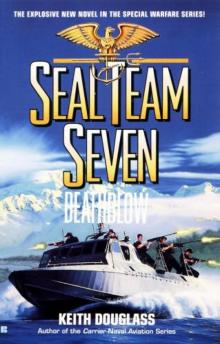 Death Blow sts-14
Death Blow sts-14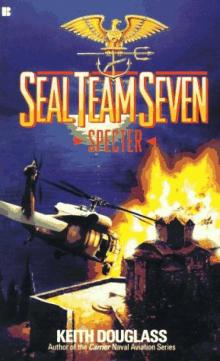 Seal Team Seven 02 - Spector
Seal Team Seven 02 - Spector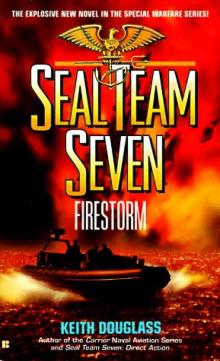 Seal Team Seven 5 - Firestorm
Seal Team Seven 5 - Firestorm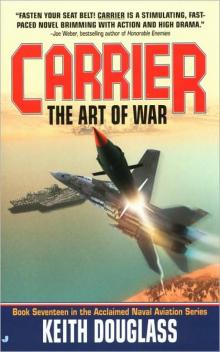 The Art of War c-17
The Art of War c-17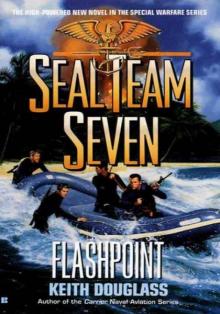 Flashpoint sts-11
Flashpoint sts-11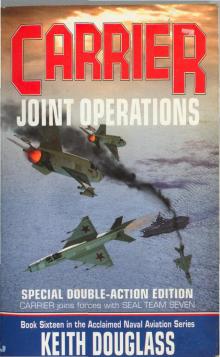 Carrier - Joint Operation Book 16
Carrier - Joint Operation Book 16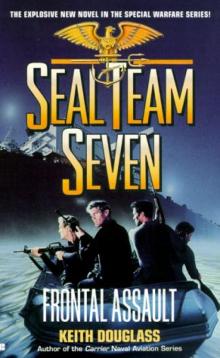 Frontal Assault sts-10
Frontal Assault sts-10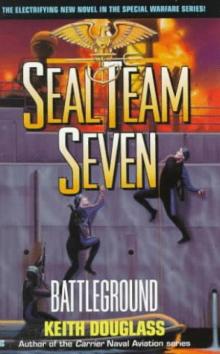 Battleground sts-6
Battleground sts-6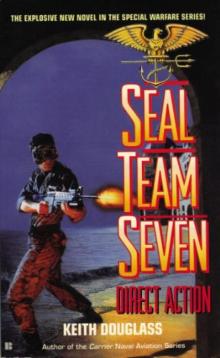 Direct Action sts-4
Direct Action sts-4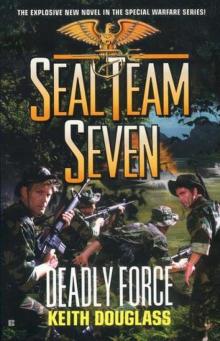 Deadly Force sts-18
Deadly Force sts-18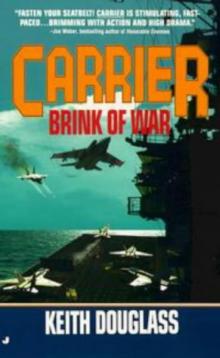 Carrier 13 - Brink of War
Carrier 13 - Brink of War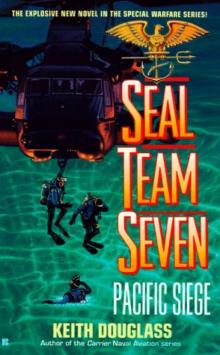 Pacific Siege sts-8
Pacific Siege sts-8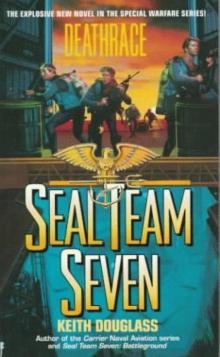 Deathrace sts-7
Deathrace sts-7